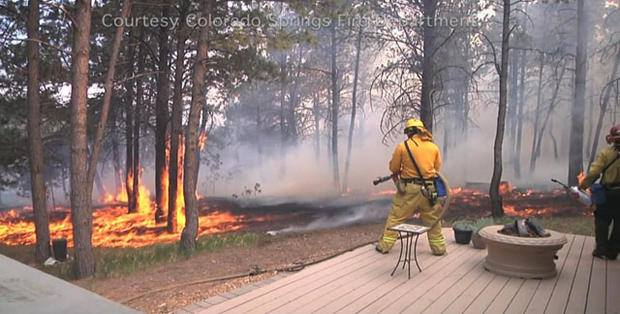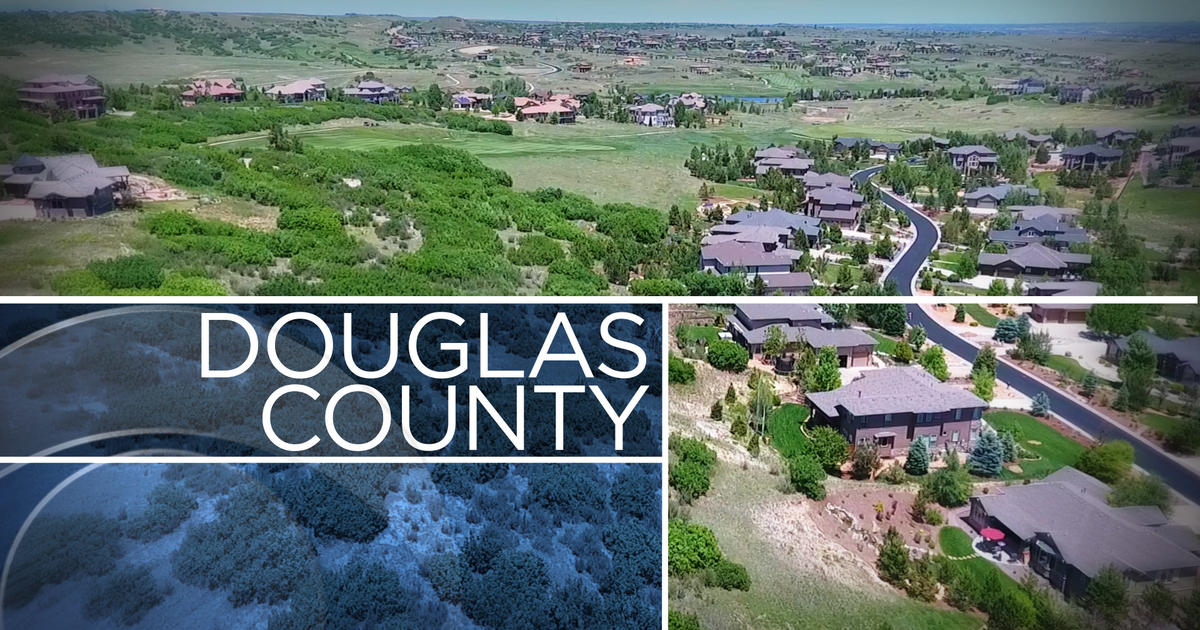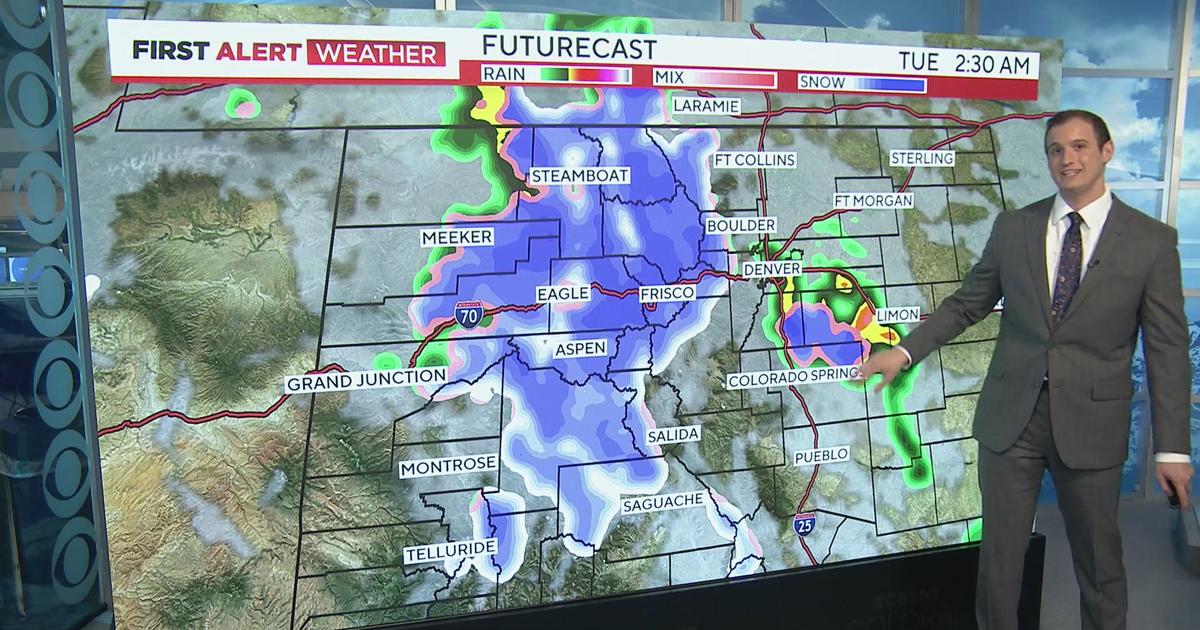Colorado's 2014 Wildfire Season Mild Compared To Recent Devastation
DENVER (CBS4) - After the Alkali Fire charred roughly 21,000 acres of brush and grass in northwestern Colorado last month, the state's so-far timid wildfire season limped meekly through July.
To be certain, a 21,000-acre wildland fire is no weakling. That's nearly 33 square miles, larger than some of the most devastating blazes in recent Colorado history.
But the Alkali is the rare monster this year, comprising approximately 80 percent of all acres that burned through the end of the month. Most other fires passed unnoticed by comparison. Even the Alkali drew relatively scant attention because of its remote location.
"If you look at 2012 and 2013, by this time in those two years, we were way over the top -- so far as the number of fires, the number of burned acres and, unfortunately, the number of burned homes at that point in time. It was much more significant," says Rocco Snart, the section chief for the Colorado Division of Fire Prevention and Control.
By July 28 this year, 589 fires burned 26,544 acres in Colorado, according to the U.S. Forest Service. Through the same date last year, 796 fires claimed 193,273 acres. Two years ago, 1,041 fires torched 224,559 acres.
This year, credit a wet spring and summer, significant snowpack, lessened drought conditions and a lack of persistent heat -- all hallmarks of a wetter weather pattern throughout Colorado this year, Snart says.
Data on July 29 showed most state river basins boasted higher snowpack levels, with the North Platte leading at 141 percent of normal. And the U.S. Drought Monitor reported a stark difference in Colorado's drought: Last July, the entire state experienced some kind of drought conditions. By July 22 this year, only 40 percent of the state suffered some drought and less than 1 percent of the state was in exceptional drought.
Compare that to weather patterns in 2012 and 2013 when heat, lightning and wind rapidly sparked wildfires. But the National Interagency Fire Center forecasts the Rocky Mountain region -- Colorado, Kansas, Nebraska and parts of Wyoming and the Dakotas -- will see a much smaller number of burned acres this year.
By the end of July the last two seasons, several major fires destroyed more than 1,000 homes in subdivisions outside of Colorado Springs and Fort Collins.
In 2013:
* The Black Forest Fire, now the most destructive wildfire in state history, burned 14,280 acres, destroyed 486 homes and killed two after it began on June 11 north of Colorado Springs.
* The East Peak Fire in southern Colorado claimed 13,572 acres and forced evacuation notices for Walsenburg residents before it was contained on July 9.
* The West Fork Fire Complex started June 5 and burned 110,405 acres after three separate fires merged near Wolf Creek Pass in southwestern Colorado. It's the second-largest wildfire by area in state history, eclipsed only by 2002's Hayman Fire, which burned nearly 138,000 acres.
In 2012:
* The High Park Fire killed one person, burned 87,284 acres and destroyed at least 250 homes after it began on June 9 west of Fort Collins. It was the most destructive wildfire in state history until the Waldo Canyon Fire began a few days later.
* The Waldo Canyon Fire began June 23 and claimed 18,247 acres before crews extinguished it in mid-July. It killed two people and destroyed 346 homes northwest of Colorado Springs.
* The Little Sand Fire in the San Juan National Forest burned approximately 25,000 acres before being contained in late July.
The calm fire season this year doesn't mean Colorado won't endure another tough one. In fact, grasses and trees fed by weeks of rain grow. And growth means fuel and potential for devastating blazes. This season, fire missed its usual accomplice -- lots of lightning -- and that has helped.
"You'll have more fuel, but the question is: Are there any ignitions? There haven't been a lot of ignition periods because there hasn't been a lot of lightning until the last week or so," Snart says.
Still, dry fuels just need just a small spark.
"They're more receptive to fire," he says.
Colorado can often suffer about the same number of fires year to year, but the amount burned can vary drastically. In short, the average fire size is wildly different, depending on the year.
Snart says a few factors account for that and two can be traced to larger climatic patterns:
First, wind plays a major role. "Most of our fires in Colorado that grow really big have a lot of wind associated with them," he says.
Second, lightning patterns can also determine fire size. Strikes may ignite single-tree fires along ridge lines, but they burn themselves out quickly and don't spread. And if lightning is accompanied by wet storms, that can tamp a fire's spread.
And then there's just plain luck.
So far in 2014, Snart says, Colorado hasn't seen many days with multiple fires that stretch resources thin. Crews were well-prepared to start the season -- aided by significant snowpack, more rain and less drought -- so when a blaze began it was quickly knocked out.
"We're able to catch them," he says.
Colorado's benign wildfire season mirrors other states and regions this year.
Nationally, fewer acres have burned than any other year in the past decade through July 30. So far, approximately 33,000 fires have claimed just 1.6 million acres. Over the last decade, the country saw an average 47,000 fires burn 4.2 million acres. The decade's high points: In 2011, more than 6 million burned acres through the end of July, and in 2006, more than 70,000 wildfires had started.
Ed Delgado, the national program manager for predictive services at the Bureau of Land Management, attributes the mellow season to a global weather pattern that's calmed conditions across North America. The Rockies, from Montana to New Mexico, are seeing fewer fires. Alaska's season in 2014 is insubstantial. The fire season in the southeastern United States -- mostly non-existent the last couple years -- has mostly passed and kept burned acreage down.
In addition to small numbers, when blazes have occurred this year, the nation isn't battling fire after fire that tax resources and crews.
"Typically, we see a cumulative effect where you keep adding fires on top of fires. (In 2014), we've got most of them out or contain a lot of them. It hasn't been this constant adding of fires. It's been some fire activity, then quiet, then fire activity, then quiet," Delgado says.
But he cautions the national season isn't over. While Coloradans are accustomed to a summer fire season, other parts of the country like California and the Pacific Northwest still merit concern because their seasons haven't peaked -- despite a number of fires burning in Washington and Oregon. Fires can burn along the West Coast well into December. And future seasons in Colorado and the Rocky Mountains worry Delgado because wetter years grow grasses, trees and shrubs.
"Things can change very quickly with just a few days of hot and dry weather," Delgado says.
Snart echoes that: Favorable conditions don't hold for long. Persistent rains don't last. Bouts of heat and wind can hover over the state for weeks. Grasses that flourished in wet weather will cure and dry to a crispy crackle.
"Eventually this weather pattern is going to move on," Snart says of the spring and early summer's moisture. "I would expect we could have a flurry of fire activity, depending on where you are in the state, for the next month. Is there going to be another big massive fire? Who knows on that one."
The public's memories can be short, he fears, and residents' complacency may trigger dangerous conditions.
"They tend to forget that just because we didn't have them this year doesn't mean we're not going to have them next year. This year, we have minimal to moderate fire activity. Maybe we have another quiet year next year," he says.
Snart says he worries residents in fire-prone locations fail to perform mitigation and work around their homes -- culling dry brush and dead trees near buildings, for instance -- in wet seasons, providing more kindling for fires sure to start eventually.
The Colorado State Forest Service recommends residents whose homes sit amid natural vegetation create a defensible space to lower the risk their homes will burn during a fire. This includes removing logs, branches, wood chips, pine needles, grasses and any highly flammable landscaping to outside a 15- to 30-foot zone at the least. The size and numbers of zones depends on a variety of factors, including home size.
RELATED: Mitigating Against Wildfire Is More Than Cutting Down Trees
Snart says residents can't forget vigilance across seasons -- especially the humble ones.
"It concerns me because if they think, 'We ramped up and paid for a bunch of suppression resources through tax dollars,' they forget about those in subsequent years. They think, 'Why do we keep saving this money? Why are we doing these things when we're not having fires anymore?' We continue to have fire seasons. When we have bad fire seasons, they progressively seem to get worse and worse -- the number of fires, the number of acres, the number of homes burned."
Snart lists a litany of historic fires -- Hayman, Black Forest, Royal Gorge -- not as glance at fire's past fury but more as a reminder of what will undoubtedly come.
"It's not a matter of if we're going to have another bad fire season," he says. "It's a matter of when."
- Written by Tim Skillern for CBSDenver.com
Latest Wildfire Reports
Wildfire Resources
- Visit CBSDenver.com's Living With Wildfire section.
Wildfire Photo Galleries
- See images from the most destructive wildfires (Black Forest, Waldo Canyon, High Park and Fourmile) and largest wildfire (Hayman) in Colorado history.




